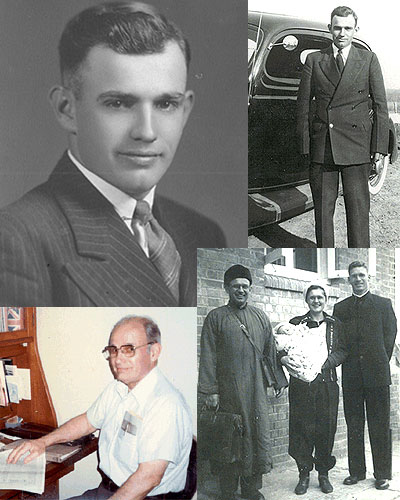
I'm what you probably call mostly illiterate when it comes to classical music -- I an't read a sheet of music; never learned to play a musical instrument, have no appreciation beyond whether I personally enjoy it or not. So when it comes to reading a book like Johnson's "Mozart" I was not prepared to enjoy Paul Johnson's
Mozart: A Life (2013) as much as I did.
One is naturally informed that "Mozart was a genius, yadda yadda yadda ..." -- the strength of Johnson's biographical portrayal is that, in the brief space he has (the book is only 162 pages), he effectively communicates an understanding of precisely WHY Mozart is considered a genius -- and why people love his work. Some impressive observations:
- Mozart's earliest compositions were done when he was five
- His musical personality began to emerge at the age of eight; by eight or nine he "played all keyboard instruments, reading at sight, even including the organ, though his small size raised difficulties with the foot pedals";
- by ten or eleven he was already an accomplished musician with an admirable familiarity with most orchestral instruments. (One notable exception was the harp, which he could not play).
- By the age of twelve Mozart was a mature composer -- from which point on there was "never a month, scarcely a week, when he did not produce a substantial score"
- The sheer volume of his work is phenomenal. Franz Liszt once remarked the Mozart actually composed more bars than a trained copyist could write in a lifetime
Mozart "had a highly personal approach to music. He associated each instrument with particular people he knew who were especially good at playing it, and wrote with them -- or often one of them -- in mind. Nothing pleased him more than an intimate talk with a player about his instrument, what it could do or not do, and what it could be MADE to do by a masterful player." Johnson ventures into great detail regarding the nature and challenges of the instruments that Mozart worked with, such as the organ, the violin, the viola, the flute, the clarinet, and other horned, reed and timpany instruments. (The most fascinating for me being the bassoon, as I had no idea just how delicate it was).
One gets a genuine sense of Mozart's personality. He could treat with utmost seriousness those things one ought to treat with gravity (his Catholic faith and the Last Things, writing to his father: "I thank my God for graciously granting me the opportunity (you know what I mean) of learning that death is the key which unlocks the door to our true happiness") but also possessed a robust sense of humor and a joy in life.
"Gay himself by nature, he saw no reason why people should not enjoy a little innocent pleasure, or not-so-innocent pleasure, for that matter. He might conduct a Stations of the Cross in the morning [...], or a Stabat Mater, a similar service centering on the Virgin Mary, or even a requiem, then turn to and arrange a riotous set of German dances in the afternoon.
Mozart loved and appreciated jokes, and was fond of inserting into his works segments that were literally impossible for instrumentalists to play.
What I found particularly beneficial is Johnson's sympathetic treatment of various figures in Mozart's life, particularly his father, his sister, and his friendships with other composers of his day (Bach, Hayden). Thankfully, Johnson also address various historical myths that have sprung up regarding Mozart's life, from what are relatively benign (ex. that he "disliked the flute") to those that are more pernicious. Concerning the unfavorable portrayals of his wife, Constanze he concludes the following:
The truth, so far as I can judge, is that Constanze was always a good wife and mother, ran the household well, but was out of action a large part of the time, either pregnant or nursing or in Baden in desperate attempts to regain her health and strength. Nor was Mozart a bad husband.
and of their financial difficulties, a subject which it seems is often over-emphasized:
Indebtedness was almost a universal habit among married couples in the eighteenth and nineteenth centuries ... [despite being in debt] his total liabilities never exceeded his assets. At his death, his debts were small by prevailing standards and were rapidly cleared from current income.
and of the negative portrayals of his father, Leopold Mozart:
We have been taught to see Leopold Mozart as a bossy, overpossessive and tyrannical figure, eager to control every aspect of his son's life down to the smallest detail.. There is something to this, but in may ways he was an admirable father, who sacrificed his own promising career as performer and composer entirely in order to promote his son's and who behaved in many ways with heroic unselfishness.
and of course Salieri, villified in Peter Shaffer's play
and in the 1984 cinematic adaptation Amadeus:
The story that he was poisoned is a complete fantasy, and the naming of Salieri as the murderer is a gross libel on that hardworking and innocent man."
Johnson's own appreciation of classical music is on display, as he employs a number of musical terms that had me thumbing the dictionary, though not overwhelmingly so. Had I a better grasp of musical terminology I would have better understood certain segments of this book, but my own personal impediments aside, I found this one of the most thrilling books I've read this year. To such an extent that I'm now motivated to spend the coming year to seriously investigating Mozart's many works (and not just those I'm familiar with).















